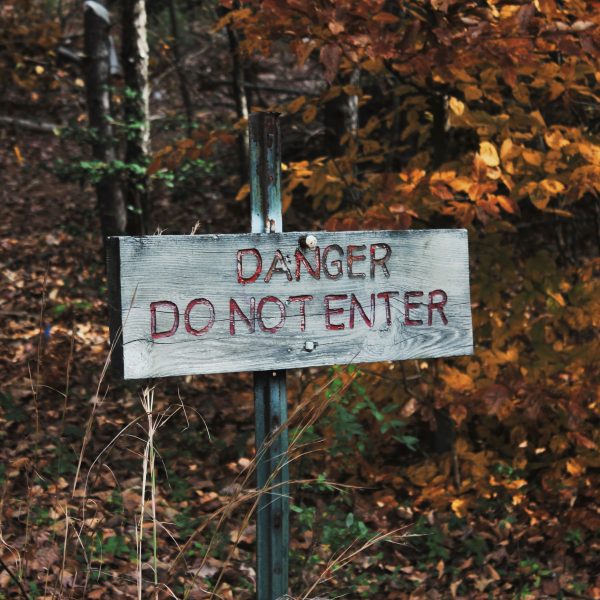Acceptable risk, risk in play, and the role of external experts

In February this year, an outside school hours care (OSHC) in Western Australia received a $13,000 after a child fell off a tree stump. The Sector covered the story, which drew attention from Andrew Reedy, Director of Play Check and a member of the Standards Australia committee for playground equipment.
Recently Andrew spoke with The Sector about risk in play, acceptable risk, and how experts such as auditors can be used by early childhood services to affirm their position, and advocate for responsible risk opportunities in their setting.
Interviewee:Andrew Reedy, Director, Play Check
Date: 27.09.19
Topic: risk, advocacy, regulation
Freya: Thanks for speaking to us Andrew. Can you tell me more about the term “acceptable risk?” Where’s the line for what is and isn’t acceptable in the risk space?
Andrew: The concept of acceptable risk in playground design is a shift away from the prevailing attitude that has existed since the 1980’s, in which all risk was viewed as something to be eliminated. In recent years there has been a growing recognition that protecting children from all risk, often termed “wrapping them in cotton wool”carries in itself inherent challenges to healthy childhood development.
The playground Standard AS 4685.1–2014 acknowledges the value of acceptable risk:
“Risk-taking is an essential feature of play provision and of all environments in which children legitimately spend time playing… In play provision exposure to some degree of risk may be of benefit because it satisfies a basic human need and gives children the chance to learn about risk and consequences in a controlled environment… Children need to learn to cope with risk and this may lead to bumps and bruises and even occasionally a broken limb.”
The same Standard goes on to outline considerations in determining whether a particular risk is acceptable or not:
“Play provision should aim at managing the balance between the need to offer risk and the need to keep children safe from serious harm… The aim of this standard is first and foremost to prevent accidents with a disabling or fatal consequence, and secondly, to lessen serious consequences caused by the occasional mishap that inevitably will occur in children’s pursuit of expanding their level of competence, be it socially, intellectually or physically.”
So really, acceptable risk could be termed as risks that are easy for children to assess themselves; any risk that engages and challenges children; supports growth, learning and development; and, if an incident were to occur, it is unlikely to lead to a serious or permanent injury.
A few years ago, you were more likely to find a risk accepting approach to risk among country kids and parents, however recently there has been a significant shift in the attitudes of many in the cities, particularly with the growing popularity of ‘nature play’.
Freya: Sometimes early childhood education and care (ECEC) services are confronted by perspectives and rulings which are counter to their own perceptions and beliefs about risk. Do you have any suggestions about how they can respectfully challenge these different opinions, and advocated for acceptable risk in their services.
Andrew: I think that as a society we have become accustomed to apportioning blame whenever an incident causing harm occurs. Rather than accepting that ‘accidents sometimes happen’, and that they may be no more than that – an unfortunate incident for which no one should be held responsible, our first reaction is to look for someone to be held to account.
In saying this I do not suggest for a minute that operators and designers do not have a significant responsibility to ensure that their play-spaces are free of unacceptable hazards. Certainly, we all have a responsibility to take all reasonable care to eliminate unacceptable risks, and let’s face it, no one wants their child to be involved in an accident resulting in harm.
But if we seek to take action and to hold someone responsible for incidents that result in a relatively minor injury, we run the risk of limiting our children’s play experience to very sterile environments and depriving them of important opportunities to learn how to manage risk.
Nature playgrounds have become increasingly popular in recent years. One of the attractions of nature-based playgrounds is that the elements are not always uniform or predictable. They often require thought as children navigate them and they develop skills that a sterile and predictable environment will not. With the unpredictable nature of some of these elements come some risks, but these risks are generally far outweighed by the benefits associated by such play experiences
Freya: Is there a way that ECEC services can learn from experts in fields outside of early childhood, to affirm their position, and advocate for responsible risk opportunities in their setting?
Andrew: The Play England publication ‘Managing Risk in Play Provision’ suggests that providers of play “weigh, with equal consideration, the duty to protect children from avoidable serious harm and the duty to provide them with stimulating, adventurous play opportunities”.
This determination can be made by early childhood services operators, often with the assistance of a competent playground risk assessor or auditor.
The playground Standards recommend application of ‘risk-benefit assessments’ in playground design and management. Unlike typical risk assessments, where consideration is only given to the probability and potential severity of an incident, a risk-benefit assessment is defined in the Standard AS 4685.0:2017 as “a tool to aid risk management that explicitly brings together consideration of the benefits as well as the risks of play in a single judgement.”
Exercising such a balanced judgement relating to playground design will not ensure an absence of any injury potential (this cannot be guaranteed in even the safest and most sterile playgrounds), but a documented risk assessment process will provide a degree of legal protection in demonstrating that the operator has taken reasonable care.
Freya: The case that inspired you to get in touch with us happened in WA, which has a reputation as being the “state of difference” in terms of how the Regulatory Authority enforces serious breaches of the Education and Care Services National Law. You’ve spoken before about how, in the education space as a whole, outside of ECEC in WA as being quite accepting of risks. Any comments about the dichotomy here?
Andrew: I find it curious that the ECEC space in WA is viewed as being particularly hard on safety and strict compliance in comparison with other states. I spend a lot of time working in the public open space arena and with schools. In terms of public open space, WA is viewed by some in other states as being ahead of the pack in terms of applying a balanced approach to risk in playgrounds. Many local government authorities have embraced the risk-benefit assessment approach and schools are generally managing well the balance between the need to offer risk and the need to keep children safe from serious harm.
Freya: Thanks Andrew. Finally, is there anything else you’d like to share, in relation to risk and early childhood?
Andrew: Thomas Malaby, once said, “Any view that begins with the assumption that risk is dangerous (and should be minimized/avoided) must be questioned . . . It is through the engagement of indeterminacies, rather than their minimization or resolution . . . that one may socially demonstrate one’s place vis-à-vis chance, and, by extension, one’s place in relation to others in the world.”
I also like Penny Wilson, author of The Playwork Primer, who says it is our responsibility as adults to give children as much risk as they can handle, in the time that they can handle it and in a way that they can handle it… It helps them to know the parameters they are safe to work within.
Finally, Richard Louv, author of “Last Child in the Woods: Saving Our Children from Nature-Deficit Disorder” who pointed to the growing body of scientific evidence suggests that nature-deficit disorder contributes to a diminished use of the senses, attention difficulties, conditions of obesity, and higher rates of emotional and physical illnesses. Research also suggests that the nature-deficit weakens ecological literacy and stewardship of the natural world. These problems are linked more broadly to what health care experts call the ‘epidemic of inactivity’, and to a devaluing of independent play.”
Freya: Terrific, thanks for your time Andrew
Popular

Workforce
Quality
Practice
Provider
Research
How one teacher is using Little J & Big Cuz to build empathy, understanding and confidence in First Nations learning
2025-12-08 07:15:19
by Fiona Alston

Quality
Policy
Practice
Provider
Economics
Research
Workforce
NQF Annual Report 2025: Quality gains continue, but sector faces compliance pressures and persistent equity gaps
2025-12-10 07:21:19
by Fiona Alston

Research
Provider
Intentional science play: a three‑stage pathway to foster children’s scientific literacy in the early years
2025-12-10 07:45:26
by Fiona Alston
















